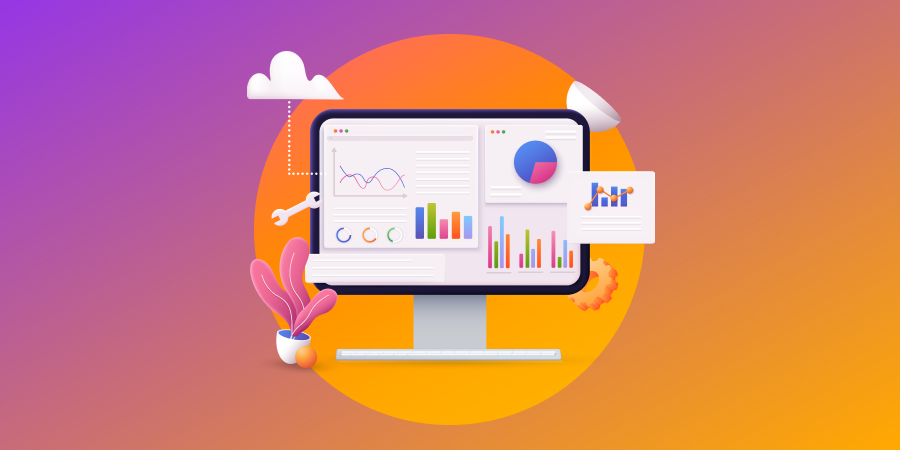PPC advertising for B2B businesses is one of the most efficient methods to connect with decision-makers, boost brand visibility, and fill a sales pipeline with qualified leads. Unlike organic strategies that take time to build traction, PPC allows immediate placement at the top of search engines or social platforms, where business professionals are actively researching solutions. The ability to target by keyword, industry, job title, and more makes it easier for B2B marketers to reach niche audiences with tailored messages. It’s especially powerful in industries where purchase decisions are complex and involve multiple stakeholders. With the right strategy, PPC can become a controllable and scalable lead-generation channel that aligns with revenue goals and adapts as buyer behavior evolves.
B2B Versus B2C: What Makes PPC Advertising Unique
The distinctions between B2B and B2C campaigns are essential when building effective paid strategies. B2C advertising typically aims for quick conversions, with messaging focused on emotions, discounts, and mass-market appeal. In contrast, PPC advertising for B2B requires more precise targeting, in-depth messaging, and an understanding of the longer buying journey. B2B buyers research thoroughly, often compare multiple vendors, and require more touchpoints before committing. That means PPC content must be educational, authoritative, and customized to speak to professionals. Additionally, B2B campaigns often focus on lead generation forms, demo bookings, or whitepaper downloads rather than direct e-commerce sales. The sophistication of B2B PPC lies in nurturing rather than closing with a single click.
Where to Run B2B PPC Ads for Maximum ROI
Channel selection plays a vital role in campaign success. Google Ads remains the default for intent-based queries, capturing traffic from professionals searching for specific tools or services. However, platforms like LinkedIn are indispensable when targeting by company size, job function, or industry. LinkedIn’s native filters allow for unmatched segmentation, making it ideal for high-ticket B2B offerings. Microsoft Ads, while often overlooked, offers cheaper CPCs and strong performance in professional sectors, especially in finance and technology. PPC advertising for B2B can also benefit from industry-specific directories, Reddit, or even YouTube when used for awareness and remarketing. Each channel offers unique strengths, and the best results come from a mix tailored to where your target audience spends time and how they prefer to engage.
The Importance of Intent in B2B Keyword Strategy
A B2B keyword strategy must go beyond basic search volume and focus on the intent behind every query. Generic keywords like “project management software” are broad and competitive, whereas longer-tail phrases such as “project management platform for enterprise IT teams” signal high purchase intent and specific needs. This is where PPC advertising for B2B gains an edge—through focused targeting that reduces wasted spend and improves lead quality. It’s critical to understand the stages of the buyer’s journey and map keywords accordingly, whether they’re researching solutions, comparing vendors, or ready to request a quote. The use of match types, negative keywords, and search term analysis ensures campaigns continually refine toward what drives real results.
Writing Compelling Ads That Speak to Business Needs
Great ad copy for B2B isn’t just clever—it’s strategic. Business professionals are pressed for time and are drawn to headlines that solve their problems or speak directly to their goals. Instead of using vague claims, effective ads highlight specific outcomes, like “Automate Your Payroll in Under 30 Minutes” or “Boost B2B Sales with Predictive AI Tools.” The goal is to immediately communicate relevance and trustworthiness. PPC advertising for B2B works best when ad copy mirrors the language of your target industry, uses statistics or credentials for authority, and ends with a strong call to action that aligns with the user’s readiness to engage. Clarity, not creativity, often wins the click.
Designing Landing Pages That Convert Business Traffic

The job of your landing page is to close the gap between click and conversion. For B2B campaigns, that means designing a page that is simple, persuasive, and hyper-focused on one desired action—be it scheduling a demo, filling out a lead form, or downloading gated content. Visual clutter, weak headlines, and generic messaging can drive bounce rates up. Landing pages should reflect the messaging and keywords used in the ad, reinforcing trust and clarity. PPC advertising for B2B gains strength when pages include proof elements like client logos, case studies, or measurable results, along with conversion-focused design that minimizes distractions. Fast load times and mobile responsiveness are also essential to keep business users engaged.
Using Content Offers to Capture and Nurture Leads
Most B2B buyers won’t convert immediately—they need to trust you first. This is why lead magnets like whitepapers, industry reports, calculators, or templates can be powerful conversion tools. Offering these in exchange for an email address gives marketers a foot in the door to start nurturing leads through email campaigns or remarketing. PPC advertising for B2B often benefits from this approach, as it aligns with the way professionals research and vet vendors. High-value content positions your company as a thought leader while also qualifying users based on their interest in specific topics. Over time, these prospects become sales-ready through continued engagement with tailored messaging and follow-up.
Keeping Your Brand Visible with Retargeting Ads
Since B2B purchase cycles are typically long, retargeting is essential for staying top-of-mind throughout the decision-making process. Visitors who leave your site without converting can be shown personalized ads reminding them of what they viewed, encouraging them to take the next step. These ads can focus on benefits, include social proof, or offer time-sensitive incentives. PPC advertising for B2B leverages retargeting as a powerful tool to boost ROI by re-engaging warm prospects who are already familiar with your brand. Platforms like LinkedIn, Google Display Network, and Facebook allow sophisticated retargeting setups, so you can segment by behavior—such as whitepaper downloads or cart abandonments—and deliver highly relevant follow-up ads.
Analyzing and Optimizing Campaign Performance
Regular analysis ensures your PPC campaigns are improving and adapting to what your audience responds to. While impressions and clicks matter, B2B marketers should dig deeper into metrics like cost per qualified lead, sales conversion rates, and the impact on pipeline value. Integrating PPC platforms with CRM tools like HubSpot or Salesforce allows marketers to connect ad campaigns directly to revenue. PPC advertising for B2B becomes more valuable when it is guided by data, not assumptions. A/B testing headlines, CTAs, and even landing page layouts can uncover insights that significantly increase performance. Continuous optimization is the key to ensuring your budget is driving high-value results rather than wasted impressions.
Managing Budgets and Scaling Campaigns Effectively
Budgeting in B2B PPC isn’t about spending the most—it’s about spending smart. Start with a test budget that allows for controlled experimentation across ad platforms, audiences, and creative formats. Evaluate early signals such as click-through rate and cost-per-lead to find the most efficient combinations. As you gather performance data, allocate more budget to top-performing campaigns while refining or pausing underperformers. PPC advertising for B2B often requires a patient approach to scaling, especially in industries with long sales cycles or complex services. Strategic scaling involves not just increasing ad spend, but investing in better creatives, more granular targeting, and improved sales handoff processes to maximize return on investment.
Conclusion: Driving Long-Term Growth with PPC Advertising for B2B
PPC advertising for B2B is more than a marketing tactic—it’s a strategic engine for growth, offering precision targeting and measurable returns. With thoughtful platform selection, high-intent keyword strategies, persuasive ad copy, and optimized landing pages, B2B marketers can consistently attract leads that align with their ideal customer profile. Content offers and retargeting further extend engagement, while integrated tracking ensures campaigns are connected to actual revenue outcomes. The true power of B2B PPC lies in its ability to adapt and evolve—refining messages, adjusting bids, and aligning with changing buyer behaviors. Companies that invest in PPC with a long-term mindset and a structured approach position themselves ahead of the competition and build pipelines full of sales-ready opportunities.
